Domain-Specific Languages 32898
-
ISBN978-0-321-71294-3
-
Видавництво
-
Автор
-
Рік2010
-
МоваАнглійська
Все про “Domain-Specific Languages”
Від видавця
When carefully selected and used, Domain-Specific Languages (DSLs) may simplify complex code, promote effective communication with customers, improve productivity, and unclog development bottlenecks. In Domain-Specific Languages, noted software development expert Martin Fowler first provides the information software professionals need to decide if and when to utilize DSLs. Then, where DSLs prove suitable, Fowler presents effective techniques for building them, and guides software engineers in choosing the right approaches for their applications.
This book’s techniques may be utilized with most modern object-oriented languages; the author provides numerous examples in Java and C#, as well as selected examples in Ruby. Wherever possible, chapters are organized to be self-standing, and most reference topics are presented in a familiar patterns format.
Armed with this wide-ranging book, developers will have the knowledge they need to make important decisions about DSLs—and, where appropriate, gain the significant technical and business benefits they offer.
The topics covered include:
• How DSLs compare to frameworks and libraries, and when those alternatives are sufficient
• Using parsers and parser generators, and parsing external DSLs
• Understanding, comparing, and choosing DSL language constructs
• Determining whether to use code generation, and comparing code generation strategies
• Previewing new language workbench tools for creating DSLs
Зміст
Table of Contents
Preface xix
Part I: Narratives 1
Chapter 1: An Introductory Example 3
Gothic Security 3
The State Machine Model 5
Programming Miss Grant’s Controller 9
Languages and Semantic Model 16
Using Code Generation 19
Using Language Workbenches 22
Visualization 24
Chapter 2: Using Domain-Specific Languages 27
Defining Domain-Specific Languages 27
Why Use a DSL? 33
Problems with DSLs 36
Wider Language Processing 39
DSL Lifecycle 40
What Makes a Good DSL Design? 42
Chapter 3: Implementing DSLs 43
Architecture of DSL Processing 43
The Workings of a Parser 47
Grammars, Syntax, and Semantics 49
Parsing Data 50
Macros 52
Chapter 4: Implementing an Internal DSL 67
Fluent and Command-Query APIs 68
The Need for a Parsing Layer 71
Using Functions 72
Literal Collections 77
Using Grammars to Choose Internal Elements 79
Closures 80
Parse Tree Manipulation 82
Annotation 84
Literal Extension 85
Reducing the Syntactic Noise 85
Dynamic Reception 86
Providing Some Type Checking 87
Chapter 5: Implementing an External DSL 89
Syntactic Analysis Strategy 89
Output Production Strategy 92
Parsing Concepts 94
Mixing-in Another Language 100
XML DSLs 101
Chapter 6: Choosing between Internal and External DSLs 105
Learning Curve 105
Cost of Building 106
Programmer Familiarity 107
Communication with Domain Experts 108
Mixing In the Host Language 108
Strong Expressiveness Boundary 109
Runtime Configuration 110
Sliding into Generality 110
Composing DSLs 111
Summing Up 111
Chapter 7: Alternative Computational Models 113
A Few Alternative Models 116
Chapter 8: Code Generation 121
Choosing What to Generate 122
How to Generate 124
Mixing Generated and Handwritten Code 126
Generating Readable Code 127
Preparse Code Generation 128
Further Reading 128
Chapter 9: Language Workbenches 129
Elements of Language Workbenches 130
Schema Definition Languages and Meta-Models 131
Source and Projectional Editing 136
Illustrative Programming 138
Tools Tour 140
Language Workbenches and CASE tools 141
Should You Use a Language Workbench? 142
Part II: Common Topics 145
Chapter 10: A Zoo of DSLs 147
Graphviz 147
JMock 149
CSS 150
Hibernate Query Language (HQL) 151
XAML 152
FIT 155
Make et al. 156
Chapter 11: Semantic Model 159
How It Works 159
When to Use It 162
The Introductory Example (Java) 163
Chapter 12: Symbol Table 165
How It Works 166
When to Use It 168
Further Reading 168
Dependency Network in an External DSL (Java and ANTLR) 168
Using Symbolic Keys in an Internal DSL (Ruby) 170
Using Enums for Statically Typed Symbols (Java) 172
Chapter 13: Context Variable 175
How It Works 175
When to Use It 176
Reading an INI File (C#) 176
Chapter 14: Construction Builder 179
How It Works 179
When to Use It 180
Building Simple Flight Data (C#) 180
Chapter 15: Macro 183
How It Works 184
When to Use It 192
Chapter 16: Notification 193
How It Works 194
When to Use It 194
A Very Simple Notification (C#) 194
Parsing Notification (Java) 195
Part III: External DSL Topics 199
Chapter 17: Delimiter-Directed Translation 201
How It Works 201
When to Use It 204
Frequent Customer Points (C#) 205
Parsing Nonautonomous Statements with Miss Grant’s Controller (Java) 211
Chapter 18: Syntax-Directed Translation 219
How It Works 220
When to Use It 227
Further Reading 227
Chapter 19: BNF 229
How It Works 229
When to Use It 238
Chapter 20: Regex Table Lexer (by Rebecca Parsons) 239
How It Works 240
When to Use It 241
Lexing Miss Grant’s Controller (Java) 241
Chapter 21: Recursive Descent Parser (by Rebecca Parsons) 245
How It Works 246
When to Use It 249
Further Reading 249
Recursive Descent and Miss Grant’s Controller (Java) 250
Chapter 22: Parser Combinator (by Rebecca Parsons) 255
How It Works 256
When to Use It 261
Parser Combinators and Miss Grant’s Controller (Java) 261
Chapter 23: Parser Generator 269
How It Works 269
When to Use It 272
Hello World (Java and ANTLR) 272
Chapter 24: Tree Construction 281
How It Works 281
When to Use It 284
Using ANTLR’s Tree Construction Syntax (Java and ANTLR) 284
Tree Construction Using Code Actions (Java and ANTLR) 292
Chapter 25: Embedded Translation 299
How It Works 299
When to Use It 300
Miss Grant’s Controller (Java and ANTLR) 300
Chapter 26: Embedded Interpretation 305
How It Works 305
When to Use It 306
A Calculator (ANTLR and Java) 306
Chapter 27: Foreign Code 309
How It Works 309
When to Use It 311
Embedding Dynamic Code (ANTLR, Java, and Javascript) 311
Chapter 28: Alternative Tokenization 319
How It Works 319
When to Use It 326
Chapter 29: Nested Operator Expression 327
How It Works 327
When to Use It 331
Chapter 30: Newline Separators 333
How It Works 333
When to Use It 335
Chapter 31: External DSL Miscellany 337
Syntactic Indentation 337
Modular Grammars 339
Part IV: Internal DSL Topics 341
Chapter 32: Expression Builder 343
How It Works 344
When to Use It 344
A Fluent Calendar with and without a Builder (Java) 345
Using Multiple Builders for the Calendar (Java) 348
Chapter 33: Function Sequence 351
How It Works 351
When to Use It 352
Simple Computer Configuration (Java) 352
Chapter 34: Nested Function 357
How It Works 357
When to Use It 359
The Simple Computer Configuration Example (Java) 360
Handling Multiple Different Arguments with Tokens (C#) 361
Using Subtype Tokens for IDE Support (Java) 363
Using Object Initializers (C#) 365
Recurring Events (C#) 366
Chapter 35: Method Chaining 373
How It Works 373
When to Use It 377
The Simple Computer Configuration Example (Java) 378
Chaining with Properties (C#) 381
Progressive Interfaces (C#) 382
Chapter 36: Object Scoping 385
How It Works 386
When to Use It 386
Security Codes (C#) 387
Using Instance Evaluation (Ruby) 392
Using an Instance Initializer (Java) 394
Chapter 37: Closure 397
How It Works 397
When to Use It 402
Chapter 38: Nested Closure 403
How It Works 403
When to Use It 405
Wrapping a Function Sequence in a Nested Closure (Ruby) 405
Simple C# Example (C#) 408
Using Method Chaining (Ruby) 409
Function Sequence with Explicit Closure Arguments (Ruby 411
Using Instance Evaluation (Ruby) 412
Chapter 39: Literal List 417
How It Works 417
When to Use It 417
Chapter 40: Literal Map 419
How It Works 419
When to Use It 420
The Computer Configuration Using Lists and Maps (Ruby) 420
Evolving to Greenspun Form (Ruby) 422
Chapter 41: Dynamic Reception 427
How It Works 428
When to Use It 429
Promotion Points Using Parsed Method Names (Ruby) 430
Promotion Points Using Chaining (Ruby) 434
Removing Quoting in the Secret Panel Controller (JRuby) 438
Chapter 42: Annotation 445
How It Works 446
When to Use It 449
Custom Syntax with Runtime Processing (Java) 449
Using a Class Method (Ruby) 451
Dynamic Code Generation (Ruby) 452
Chapter 43: Parse Tree Manipulation 455
How It Works 455
When to Use It 456
Generating IMAP Queries from C# Conditions (C#) 457
Chapter 44: Class Symbol Table 467
How It Works 468
When to Use It 469
Statically Typed Class Symbol Table (Java) 469
Chapter 45: Textual Polishing 477
How It Works 477
When to Use It 478
Polished Discount Rules (Ruby) 478
Chapter 46: Literal Extension 481
How It Works 481
When to Use It 482
Recipe Ingredients (C#) 483
Part V: Alternative Computational Models 485
Chapter 47: Adaptive Model 487
How It Works 488
When to Use It 492
Chapter 48: Decision Table 495
How It Works 495
When to Use It 497
Calculating the Fee for an Order (C#) 497
Chapter 49: Dependency Network 505
How It Works 506
When to Use It 508
Analyzing Potions (C#) 508
Chapter 50: Production Rule System 513
How It Works 514
When to Use It 517
Validations for club membership (C#) 517
Eligibility Rules: extending the club membership (C#) 521
Chapter 51: State Machine 527
How It Works 527
When to Use It 529
Secret Panel Controller (Java) 530
Part VI: Code Generation 531
Chapter 52: Transformer Generation 533
How It Works 533
When to Use It 535
Secret Panel Controller (Java generating C) 535
Chapter 53: Templated Generation 539
How It Works 539
When to Use It 541
Generating the Secret Panel State Machine with Nested Conditionals (Velocity and Java generating C) 541
Chapter 54: Embedment Helper 547
How It Works 548
When to Use It 549
Secret Panel States (Java and ANTLR) 549
Should a Helper Generate HTML? (Java and Velocity) 552
Chapter 55: Model-Aware Generation 555
How It Works 556
When to Use It 556
Secret Panel State Machine (C) 557
Loading the State Machine Dynamically (C) 564
Chapter 56: Model Ignorant Generation 567
How It Works 567
When to Use It 568
Secret Panel State Machine as Nested Conditionals (C) 568
Chapter 57: Generation Gap 571
How It Works 571
When to Use It 573
Generating Classes from a Data Schema (Java and a Little Ruby) 573
Bibliography 579
Index 581
Всі характеристики
- Видавництво
- Автор
- Категорія
- Рік2010
- Сторінок640
- Формат170х240 мм
- МоваАнглійська
Товар входить до категорії
-
Самовивіз з відділень поштових операторів від
45 ₴ -80 ₴ -
Доставка поштовими сервісами - тарифи перевізника

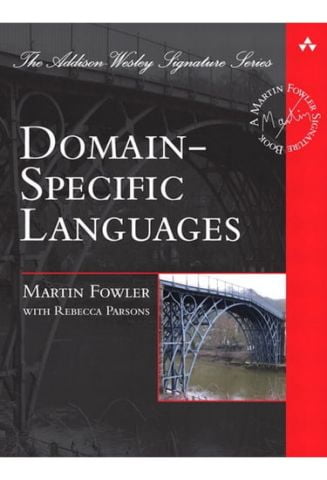



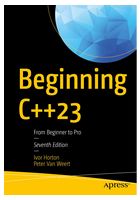

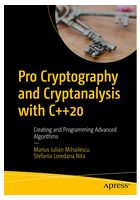



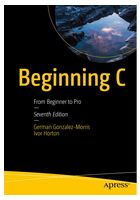
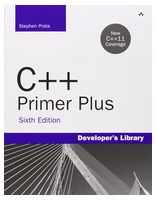
Рецензії